Greeting from the President
As a main player of Kyokuyo company group
Kyokuyo Suisan was established by mother company Kyokuyo in 1997 and engage Tuna purse seine fishing business by four(4) fishing vessels, Sashimi grade tuna processing business, and ULT(Ultra Low Temperature) grade cold storage business.
We are striving to produce the safety products in the hygienic environment.
And , We'll strive for active and efficient management as a main player of Kyokuyo company group.

President Hideo Doi
Profile
| Company title | Kyokuyo Suisan Co., Ltd. |
|---|---|
| Establish | March 12, 1997 |
| Initial capital | 192 million JP yen |
| President | Hideo Doi |
| Employee | 99-office staff, 56-crew member |
| Annual sales | 6.94 billion JP yen |
| Business field | 1. Tuna Purse seine fishing We operate four(4) tuna purse seiners, Wakaba Maru No.5, Wakaba Maru No.6, Wakaba Maru No.7 and Wakaba Maru No.11 2. Sashimi grade tuna processing We mainly produce sashimi grade tuna loin by using whole round frozen tuna. Such products are distributed in sushi restaurant and supermarket in Japan. 3. ULT cold storage Our ULT grade cold storage is designed to keep sashimi grade tuna products and its raw material as high quality, its capacity is 8,000mt with negative -55 centigrade. 4. Minced tuna processing We produce minced tuna at the Souemon plant |
| Address | Head Office and Oigawa Plant 1441-1,Habuchi Yaizu Shizuoka, Japan Zip code:421-0213 Souemon Plant 1190,Souemon Yaizu Shizuoka, Japan Zip code:425-0065 |
| Phone & Fax | General Affairs Dept. +81-54-622-5111, Fax 5115 Fisheries Dept. +81-54-622-5112, Fax 5116 Tuna processing & Cold storage Dept. +81-54-622-5113, Fax 5117 Souemon Plant +81-54-624-3300, Fax 3306 |
| Mother company | Kyokuyo Co., Ltd. http://www.kyokuyo.co.jp/ |
| Subsidiary company | Kiribati and Kyokuyo Co., Ltd (KKC) location: Bairiki, Republic of Kiribati |

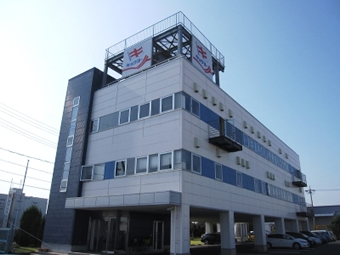
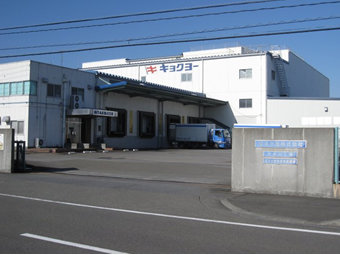
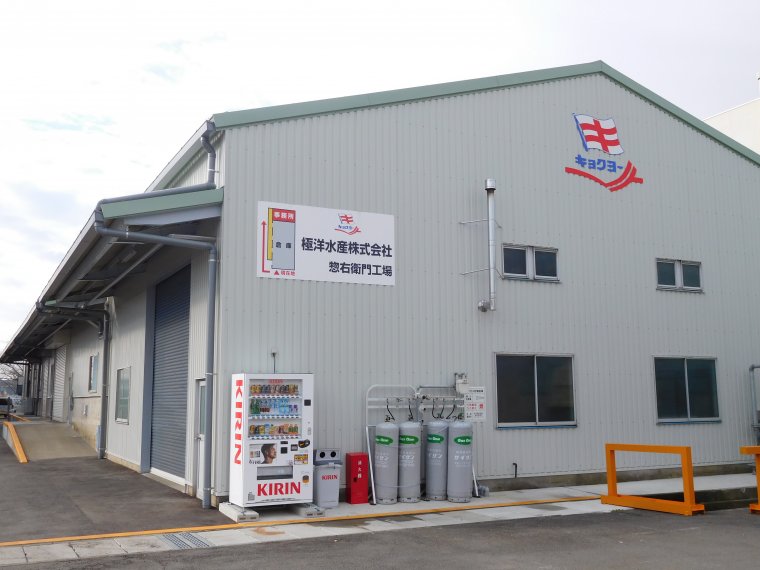
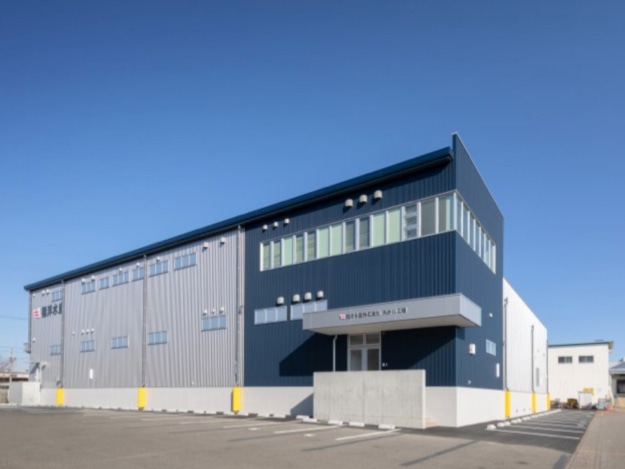
Director
President:Katsuhiko Osanai
Managing Director:Shinnya Yoshimoto
Director:Kenichi Sakuragi
Hideki Mizuno
Hideo Doi(Part-time Director)
Corporate Auditor :
Yasuo Kawai(Part-time Director)
Number of employees
Office staff : 101 persons
Crew member : 54 persons
Sum total : 155 persons(As of March 31,2024)
Tuna Purse Seine Fishing Dept.
We operate four(4) Tuna purse seine fishing vessels, Wakaba Maru No.5, Wakaba Maru No.6, Wakaba Maru No.7 and Wakaba Maru No.11. We mainly fish in Tropical area of Western Central Pacific Ocean (WCPO) such as EEZ of Papua New Guinea, Federated States of Micronesia, Kiribati,Nauru, Solomon Is. Republic of Marshall Is. and Palau in year around. Our catches are mainly unloaded in Japanese tuna market such as Yaizu(Shizuoka pref.), Makurazaki(Kagoshima pref.) and Yamagawa(Kagoshima pref.). In addition,Wakaba Maru No.5 and No.6 operate in Japan near coastal area so-called KINKAI fishing ground from mid of June to end of August in order to harvest sashimi grade oily skipjack tuna. Most of such catches are unloaded in Ishinomaki port.
Total our catches in recent years is recorded as 30,000mt per year.
Our Fleets
Our purse seine
fleets are shown in bellow;

WAKABA MARU No.5

WAKABA MARU No.6
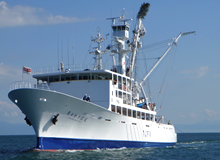
WAKABA MARU No.7

WAKABA MARU No.11
| Name of vessel | Tonnage | International Tonnage | Year launch |
|---|---|---|---|
| WAKABA MARU No.5 | 383 | 1,183 | 2003 |
| WAKABA MARU No.6 | 349 | 1,096 | 1992 |
| WAKABA MARU No.7 | 760 | 1,788 | 2009 |
| WAKABA MARU No.11 | 760 | 1,788 | 2022 |
Fishing operation Policy
We Kyokuyo Suisan Co., LTD hereby declare that we prohibit following activities for all the vessels belong us.
1. Prohibiting Shark Fining
Kyokuyo Suisan Co., LTD, does not permit aboard its vessels the practice of shark finning, which is defined as the removal and retention of any shark fins while discarding the remainder of the shark at sea and requires that all sharks are,if retained, stored, and landed with fins naturally attached.
2. Non-Entangling FADs policy
Kyokuyo Suisan Co., LTD requires onboard its vessels the use of only non-entangling FADs and does not permit abroad its vessels the practice of deploying FADs that are of Highest Entanglement Risk as defined in the ISSF Guide for Non-Entangling FADs. This policy shall apply to all new FAD deployments,regardless of the type of vessel that deploys the FADs.
In order to achieve this, the characteristics of any FADs to be deployed by the Company’s vessels adheres to the following:
For the FAD raft, we commit to not covering with netting.
For the tail structure, we commit to using ropes, canvas or nylon sheets, or other non-entangling materials.
3. FAD Management Policies
We, Kyokuyo Suisan Co., Ltd. with following vessels requires onboard its vessel(s) the use of the following best practices for FAD management, identified in ISSF Technical Report 2019-11, "Recommended Best Practices for FAD management in Tropical Tuna Purse Seine Fisheries":
a) Comply with flag state and RFMO reporting requirements for fisheries statistics by set type
We commit to Achieving 100% observer coverage on all fishing trips through the regional observer program operated by WCPFC
We also commit to Collecting data on the number of active FADs and FAD activity (deployments, visits, sets and loss) as required by WCPFC and submitting them to the required authority and WCPFC.
b) Voluntarily report additional FAD buoy data for use by RFMO science bodies
In regards to data submission, we will include the vessel name Wakabamaru No.5, 6, 7 and 11 and those IMO number. Deployments will be identified in the data submission when possible.
c) Support science-based limits on the overall number of FADs used per vessel and/or FAD sets made
We commit to Not having more than 250 active FADs per vessel at any time, even though WCPFC allows for ahigher number.
We commit to Deploying only FADs with satellite tracking buoys; and/or Not reactivating remotely buoys that were previously deactivated. They will only be reactivated when the buoys are back in port.
We also commit to Supporting a FAD closure of the purse seine fishery in WCPFC that is long enough to reduce fishing pressure on target stocks.
d) Use only non-entangling FADs to reduce ghost fishing
We commit to Only deploying or redeploying 〔i.e. placing in the water〕 FADs that are completely non-entangling (i.e., without any netting) according to the ISSF Guide for Non-Entangling FADs.
Purse seine vessels should retrieve any encountered pre-existing non-fully NEFAD (whether a set is done or not) which is not in compliance with this measure, where practicable.
e) Mitigate other environmental impacts due to FAD loss including through the use of biodegradable FADs and FAD recovery policies
We commit to Studying the feasibility of using FADs with only biodegradable material in their construction except the floatation structure of the raft.
We commit to Studying the feasibility of deploying simpler and smaller FADs.
We commit to Participate in trials of FAD recovery programs with the participation of [RFMO science bodies and/or CPCs or ISSF scientist.
We also commit to Removing from the water and bringing back to port all encountered FADs with non-biodegradable elements (e.g., plastic containers).
f) By catch issue in FAD sets implement further mitigation efforts
We commit to Applying Best Practices for safe handling and release of sharks, rays, sea turtles and sea birds.
g) Prohibiting dumping of less valuable tuna
We prohibit dump of less valuable tuna in favor of higher-value catch distorts our understanding of the actual impact on the tuna stocks by fishing operations.
- Processors, traders, importers, transporters, marketers and others involved in the seafood industry shall conduct transactions only with those purse seine vessels that retain all caught tuna (skipjack, yellowfin and bigeye), except those unfit for human consumption, or when in the final set of a trip, there is insufficient well space to accommodate all fish caught in that set.
- For purposes of this measure, “unfit for human consumption” means fish that:
(i) is meshed or crushed in the purse seine net; or
(ii) is damaged due to shark or whale depredation; or
(iii) has died and spoiled in the net where a gear failure has prevented both the normal retrieval of the net and catch and efforts to release the fish alive.
This policy was adopted on 1st April, 2025













